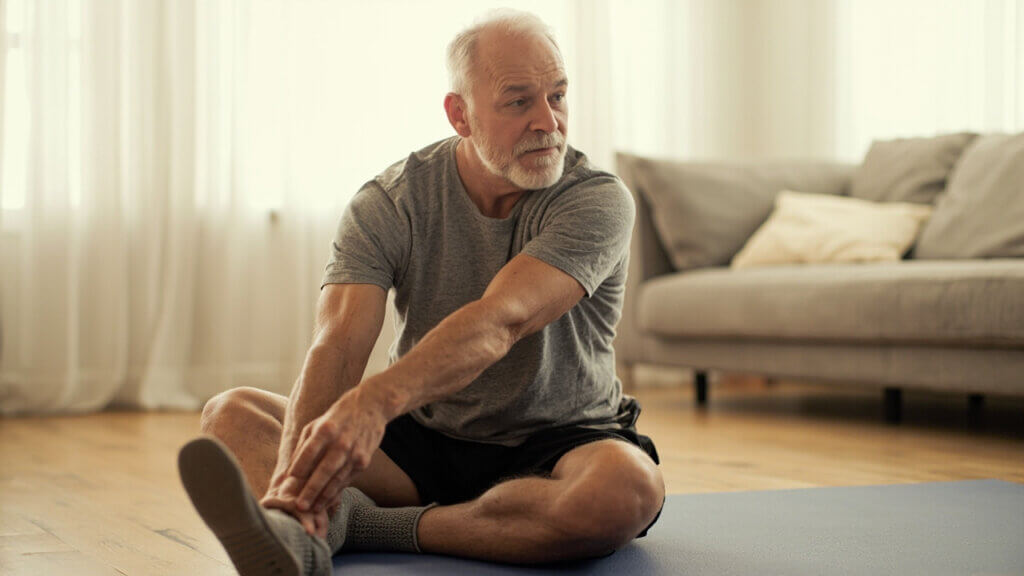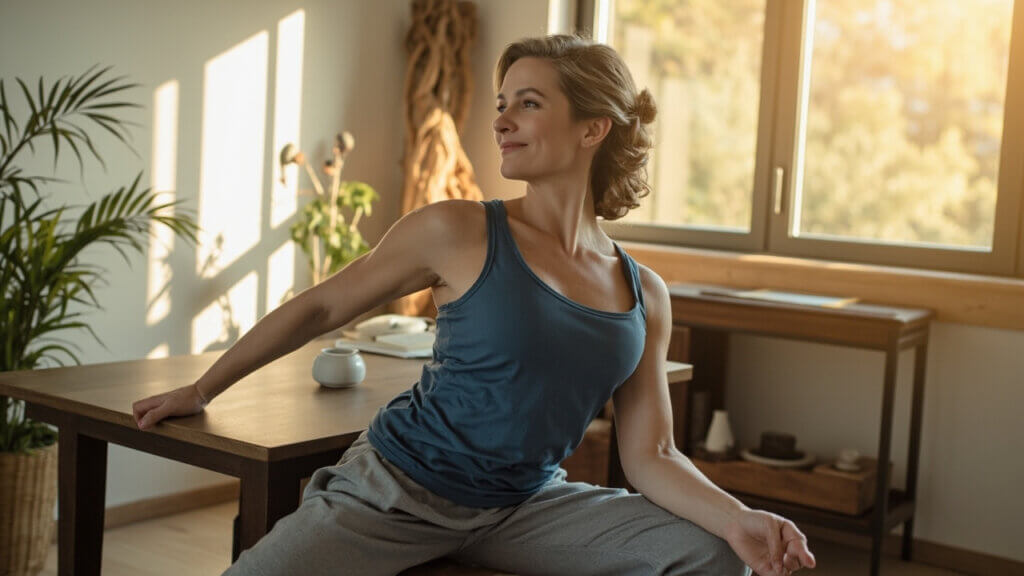As we age, our bodies naturally lose flexibility, balance, and muscle elasticity—but that doesn’t mean we’re doomed to stiffness or injury. In fact, one of the most powerful tools for staying active and pain-free after 50 is regular stretching.
Whether you’re walking, golfing, gardening, or simply getting up from the couch, stretching supports mobility, circulation, joint health, and injury prevention. Best of all? You don’t need a gym or fancy equipment to start.
This 2025 guide walks you through easy, effective stretching routines for adults over 50, complete with tips to protect joints, ease stiffness, and improve daily movement.
Why Stretching After 50 Matters More Than Ever
After 50, it’s common to notice:
- Tighter hamstrings and hips
- Reduced shoulder mobility
- Stiffness in the neck or lower back
- Longer recovery times after activity
- More risk of falling or pulling a muscle
Consistent stretching can:
- Improve posture
- Prevent falls and injuries
- Reduce joint pain
- Support balance and stability
- Help you move with ease—now and into your 70s, 80s, and beyond

When and How to Stretch Safely
Best time to stretch:
- After light movement (like walking or warming up)
- First thing in the morning to ease stiffness
- After exercise to prevent soreness
Tips for safe stretching over 50:
- Never bounce—hold each stretch gently for 20–30 seconds
- Breathe deeply and relax into the movement
- Stop if you feel sharp pain
- Aim for consistency, not intensity
Daily Stretching Routine for Seniors (10–15 Minutes)
This gentle routine targets the most important areas for mobility and injury prevention.
1. Neck & Shoulder Stretch
What it helps: Reduces tension, supports posture, relieves tech neck
- Sit or stand tall
- Gently tilt your head to one side (ear toward shoulder)
- Hold for 20 seconds, then switch sides
- Roll shoulders back 5x slowly
2. Chest Opener
What it helps: Improves posture and breathing, counteracts hunching
- Stand in a doorway
- Place arms at shoulder height on the frame
- Step forward slowly until you feel a stretch across your chest
- Hold for 20–30 seconds
3. Seated Spinal Twist
What it helps: Increases spine mobility and reduces lower back tension
- Sit on a chair with both feet flat
- Place right hand on left knee and gently twist left
- Hold for 20 seconds
- Repeat on the other side

4. Hamstring Stretch
What it helps: Prevents back pain, supports walking and balance
- Sit on the edge of a chair
- Extend one leg straight out, heel on the floor, toes up
- Lean forward slightly from the hips
- Hold for 20 seconds, then switch legs
5. Hip Flexor Stretch
What it helps: Improves walking, reduces stiffness from prolonged sitting
- Stand and take a small step back with one leg
- Bend front knee slightly while keeping back leg straight
- Press hips forward gently
- Hold for 20 seconds per side
6. Calf Stretch
What it helps: Prevents foot cramps, supports balance, eases walking
- Face a wall
- Step one foot back, press heel down
- Bend front knee and lean forward slightly
- Hold for 20–30 seconds, switch sides
7. Ankle Rolls + Toe Flexes
What it helps: Improves circulation, reduces fall risk, aids foot mobility
- While seated, lift one foot
- Roll the ankle clockwise, then counterclockwise
- Flex and point toes 10 times
- Repeat on the other foot

Add-on: Stretching Tools for Comfort and Support
- Stretch straps or resistance bands: Great for legs and shoulders
- Yoga blocks or cushions: Help support your back and hips
- Wall or chair support: Ideal for stability if balance is an issue
- Soft mat or rug: Makes floor stretches more comfortable
FAQs
How often should seniors stretch?
Ideally, stretch daily or at least 3–5 times per week. Even 10 minutes makes a difference.
Can stretching replace exercise?
Stretching supports movement—but it doesn’t replace strength or cardio. Combine it with walking, light weights, or swimming for full-body wellness.
What if I have arthritis or limited mobility?
Start with seated stretches and go slowly. Focus on breath and range of motion—not how far you go. Consult a physical therapist if needed.
Final Thought: Small Stretches, Big Impact
Stretching after 50 doesn’t need to be dramatic—it just needs to be consistent, gentle, and intentional. With just a few minutes a day, you’ll boost your mobility, protect your joints, and set yourself up for an active, injury-free future.
So unroll that mat, take a deep breath, and stretch toward a more flexible you.
